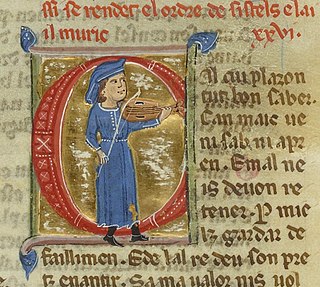
A troubadour was a composer and performer of Old Occitan lyric poetry during the High Middle Ages (1100–1350). Since the word troubadour is etymologically masculine, a female equivalent is usually called a trobairitz.

Bertran de Born was a baron from the Limousin in France, and one of the major Occitan troubadours of the 12th-13th century. He composed love songs (cansos) but was better known for his political songs (sirventes). He was involved in revolts against Richard I and then Phillip II. He married twice and had five children. In his final years, he became a monk.
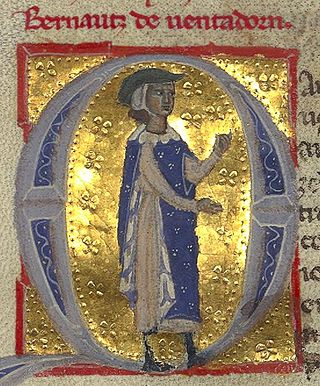
Bernart de Ventadorn was an Occitan poet-composer troubadour of the classical age of troubadour poetry. Generally regarded as the most important troubadour in both poetry and music, his 18 extant melodies of 45 known poems in total is the most to survive from any 12th-century troubadour. He is remembered for his mastery as well as popularization of the trobar leu style, and for his prolific cançons, which helped define the genre and establish the "classical" form of courtly love poetry, to be imitated and reproduced throughout the remaining century and a half of troubadour activity.
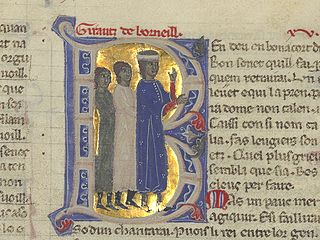
Giraut de Bornelh, whose first name is also spelled Guiraut and whose toponym is de Borneil or de Borneyll, was a troubadour connected to the castle of the viscount of Limoges. He is credited with the formalisation, if not the invention, of the "light" style, or trobar leu.

Na Castelloza was a noblewoman and trobairitz from Auvergne.
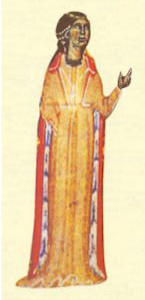
The trobairitz were Occitan female troubadours of the 12th and 13th centuries, active from around 1170 to approximately 1260. Trobairitz is both singular and plural.
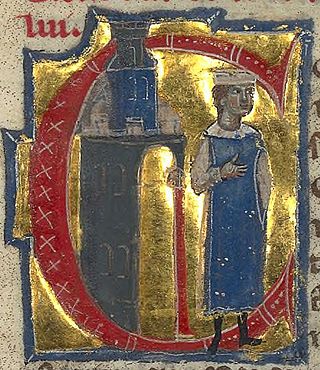
Guilhem de Saint-Leidier, also spelled Guilhem de Saint Deslier, Guillem de Saint Deidier and Guilhèm de Sant Leidier was a troubadour of the 12th century, composing in Occitan. He was lord of Saint-Didier-en-Velay, was born at some date before 1150, and died between 1195 and 1200. He was said to have loved Belissende, sister of Dalfi d'Alvernha and wife of Eracle III of Polignac, Guilhem's feudal overlord.

Pons de Capduelh was a troubadour from the Auvergne, probably from Chapteuil. His songs were known for their great gaiety. He was a popular poet and 27 of his songs are preserved, some in as many as 15 manuscripts. Four of his cansos survive with musical notation.

The (Lo) Monge de Montaudon, born Pèire de Vic, was a nobleman, monk, and troubadour from the Auvergne, born at the castle of Vic-sur-Cère near Aurillac, where he became a Benedictine monk around 1180. According to his vida, he composed "couplets while he was in the monastery and sirventes on subjects that were popular in the region."
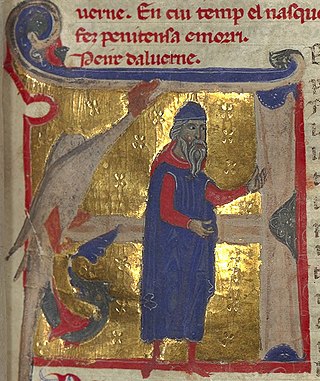
Peire d'Alvernhe or d'Alvernha was an Auvergnat troubadour with twenty-one or twenty-four surviving works. He composed in an "esoteric" and "formally complex" style known as the trobar clus. He stands out as the earliest troubadour mentioned by name in Dante's Divine Comedy and De vulgari eloquentia.
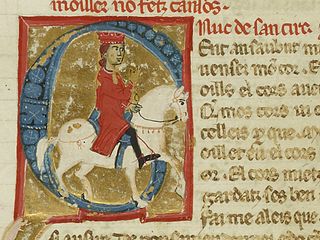
Uc de Saint Circ or Hugues (Hugh) de Saint Circq was a troubadour from Quercy. Uc is perhaps most significant to modern historians as the probable author of several vidas and razos of other troubadours, though only one of Bernart de Ventadorn exists under his name. Forty-four of his songs, including fifteen cansos and only three canso melodies, have survived, along with a didactic manual entitled Ensenhamen d'onor. According to William E. Burgwinkle, as "poet, biographer, literary historian, and mythographer, Uc must be accorded his rightful place as the 'inventor' (trobador) of 'troubadour poetry' and the idealogical trappings with which it came to be associated."

Perdigon or Perdigo was a troubadour from Lespéron in the Gévaudan. Fourteen of his works survive, including three cansos with melodies. He was respected and admired by contemporaries, judging by the widespread inclusion of his work in chansonniers and in citations by other troubadours.
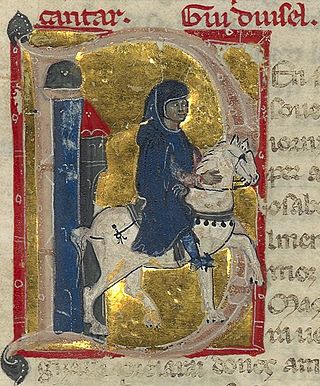
Gui d'Ussel, d'Ussèl, or d'Uisel was a troubadour from the Limousin. Twenty of his poems survive: eight cansos, two pastorelas, two coblas, and eight tensos, several with his relatives and including a partimen with Maria de Ventadorn. Four of his cansos melodies remain.

Giraut or Guiraut de Calanso or Calanson was a Gascon troubadour in the Occitan language. Of his lyric works that remain five are cansos, two descorts, a congé, a planh, and a vers. He also wrote a mock ensenhamen entitled Fadet juglar.

Albertet de Sestaro, sometimes called Albertet de Terascon, was a Provençal jongleur and troubadour from the Gapençais. Of his total oeuvre, twenty three poems survive. "Albertet" or "Albertetz" is the Occitan diminutive of Albert. Unqualified, it usually refers to Albertet de Sestaro, but there was an Albertet Cailla.

Elias de Barjols was a bourgeois Aquitainian troubadour who established himself in Provence and retired a monk. Eleven of his lyrics survive, but none of his music.
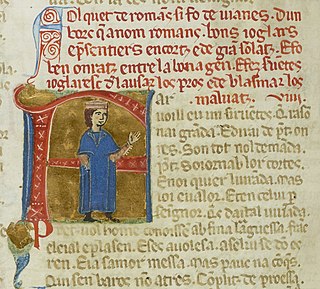
Falquetde Romans was the most famous troubadour attached to the court of Frederick II, Holy Roman Emperor, where he garnered a high reputation despite the fact that his career began as a jongleur. His surviving work consists of fourteen or fifteen pieces: seven sirventes, three tensos, two or three cansos on courtly love, a salut d'amor of 254 lines, and a religious alba. His poetry is, in general, clear and elegant, and he was apparently very religious.

Peire de Maensac was an Auvergnat knight and troubadour. He was from Maensac in the lands of Dalfi d'Alvernha. He came from the petty nobility. His brother Austor or Austors was also a troubadour, but none of his works survives. According to Peire's vida the brothers agreed that one of them would "have the castle" and the other would be the "inventor". Peire became the troubadour.
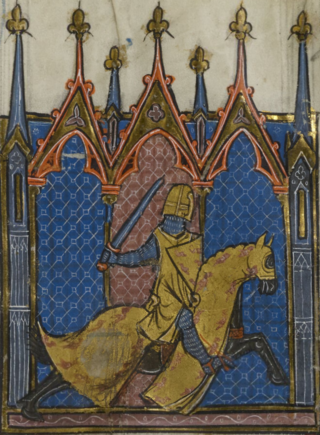
Gautier de Dargies was a trouvère from Dargies. He was one of the most prolific of the early trouvères; possibly twenty-five of his lyrics survive, twenty-two with accompanying melodies, in sixteen separate chansonniers. He was a major influence on contemporary and later trouvères, and one of the most recorded of medieval vernacular composers. Seventeen chansons courtoises can be assigned indubitably to Gautier, fifteen with music, and three more are probably his, all with music. He imported the Occitan genre of the descort into Old French and left behind three descorts with their melodies. He also participated in two jeux partis, but only one with music. His theme everywhere was courtly love.
Guiot de Dijon was a Burgundian trouvère. The seventeen chansons ascribed to him in the standard listing of Raynaud-Spanke are found in fifteen chansonniers, some without attribution or with conflicting attributions where they occur in multiple sources.



















